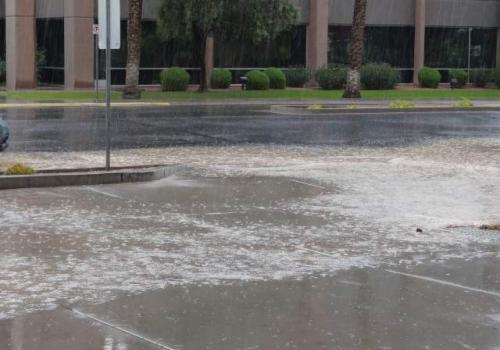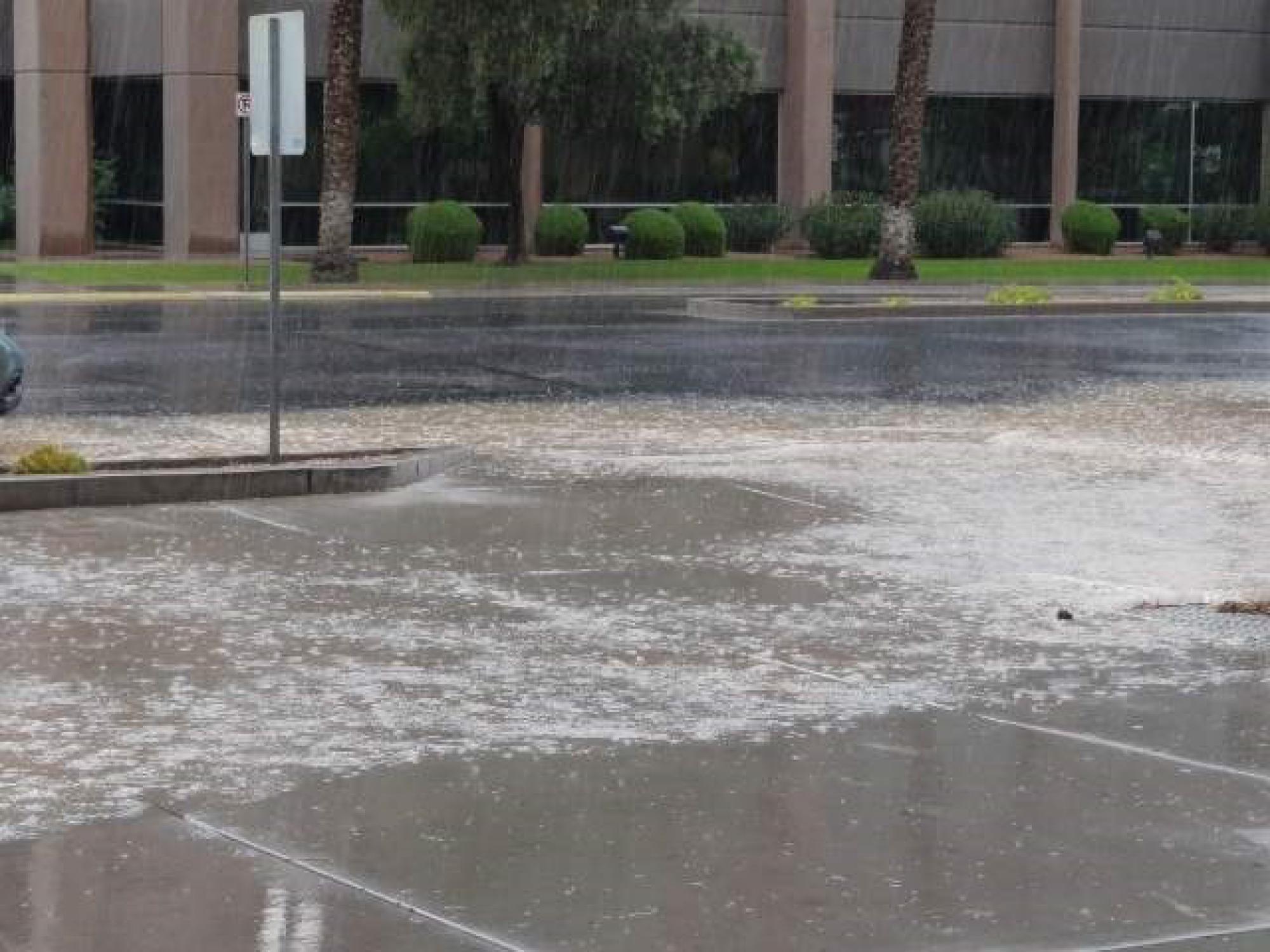Are your students concerned about climate changes and open to creating positive change in their community?
If so, the Rainwater Harvesting Engineering Design (RWH) Aqua STEM unit provides the skills and knowledge that will enable students to take positive action for the environment. The RWH unit is introduced through the lens of extreme heat in Arizona, a phenomenon every student has experienced. Students differentiate between weather and climate, and analyze local climate and weather data that illustrates increased temperatures, extreme storm events and persistent drought. Students explore their school watershed and design rain basins to sink the rain and grow shade. Rain basins with native trees and plants not only mitigate heat and flooding by using available water, but they provide a living laboratory for students to explore a new ecosystem at their school.
Driving Question: What's cool about rainwater harvesting in a warming world?
Benefits:
- Interactive curriculum helps students understand rainwater harvesting supply versus landscape demand.
- Science standards based lessons and instruction.
- Systems Thinking framework deepens student learning.
- Curriculum includes lessons, presentations, and resources ready for immediate classroom use.
- APW Educators may facilitate a rainwater harvesting run-off experiment.
- Ongoing coaching and support for teachers.
Ready to Participate?
Unit Objectives:
- Apply the engineering design process to resolve an issue or solve a problem.
- Discover new technology and methods for saving drinking water.
- Construct a model to represent your school watershed within the larger watershed.
- Use mathematics and computational thinking to support decision-making and planning.
- Relate the natural areas and the built-environment to heat and flooding.
- Evaluate the design of a rainwater harvesting system that best meets measurable criteria and constraints.
- Make an argument based on evidence to peers and adults about how their engineering design effectively mitigates heat.
Standards Correlations:
Arizona Project WET offers real-world and relevant lessons that support teachers in meeting Arizona State Science Standards. Bellow is a list of standards our unit meets (or partially meets) by grade level.
Key:
| F | Fully meets the standard as written. |
| P | Partially meets the standard. Lesson could be expanded to fully meet this standard. |
| M | Marginally meets standard. Lesson could be expanded to fully meet this standard. |
| 6.P2U1.4 | Develop and use a model to predict how forces act on objects at a distance.(Full Unit) | P |
| 6.P4U2.5 | Analyze how humans use technology to store (potential) and/or use (kinetic) energy.(Lessons 2 through 11) | P |
| 6.E1U1.6 | Investigate and construct an explanation demonstrating that radiation from the Sun provides energy and is absorbed to warm the Earth’s surface and atmosphere. (Lesson 1) | P |
| 6.L2U3.11 | Use evidence to construct an argument regarding the impact of human activities on the environment and how they positively and negatively affect the competition for energy and resources in ecosystems. (Full Unit) | F |
| 6.L2U1.14 | Construct a model that shows the cycling of matter and flow of energy in ecosystems. (Full Unit) | P |
| 7.P2U1.2 | Develop and use a model to predict how forces act on objects at a distance.(Full Unit) | P |
| 7.P3U1.3 | Plan and carry out an investigation that can support an evidence-based explanation of how objects on earth are affected by gravitational force. (Lessons 4 -11) | P |
| 7.E1U1.5 | Construct a model that shows the cycling of matter and the flow of energy in the atmosphere, hydrosphere, and geosphere. (Full Unit) | F |
| 8.P4U1.3 | Construct an explanation on how energy can be transferred from one energy store to another. (Lessons 4 through 10) | M |
| 8.P4U2.5 | Develop a solution to increase efficiency when transferring energy from one source to another. (Lesson 5) | M |
| 8.E1U3.7 | Obtain, evaluate and communicate information about data and historical patterns to predict natural hazards and other geological events (Full Unit) | P |
| 8.E1U3.8 | Construct and support an argument about how human consumption of limited resources impacts the biosphere (Full Unit) | P |
| Essential HS.E1U1.11 | Analyze and interpret data to determine how energy from the Sun affects weather patterns and climate. (Lesson 1) | P |
| Plus HS+E.E1U1.1 | Construct an explanation based upon evidence for how the Sun’s energy transfers between Earth’s systems. (Lessons 1, 7, 8) | P |
| Plus HS+E.E1U1.2 | Develop and use models to describe how variations in the flow of energy into and out of Earth’s systems result in climate change. (Lesson 1) | M |
| Essential HS.E1U1.12 | Develop and use models of the Earth that explains the role of energy and matter in Earth’s constantly changing internal and external systems (geosphere, hydrosphere, atmosphere, biosphere). (Full Unit) | F |
| Plus HS+E.E1U1.5 | Obtain, Evaluate, and communicate information on the effect of water on Earth’s materials, surface processes, and groundwater systems. (Full Unit) | F |
| Essential HS.E1U1.14 | Engage in an argument from evidence about the availability of natural resources, occurrence of natural hazards, changes in climate, and human activity and how they influence each other. (Lessons 1, 6) | P |
| Plus HS+E.E1U3.9 | Construct an explanation based upon evidence for how the availability of natural resources, occurrence of natural hazards, changes in climate have influenced human activity. (Full Unit) | P |
| Plus HS+E.E1U3.10 | Ask questions, define problems, and evaluate a solution to a complex problem, based upon a prioritized criteria and tradeoffs, that account for a range of constraints, including cost, safety, reliability, and aesthetics, as well as possible social, cultural, and environmental impacts. (Full Unit) | F |
| Plus HS+E.E1U3.11 | Develop and use a quantitative model to illustrate the relationships among Earth systems and the degree to which those relationships are being modified due to human impacts. (Full Unit) | M |
Ready to Participate?




